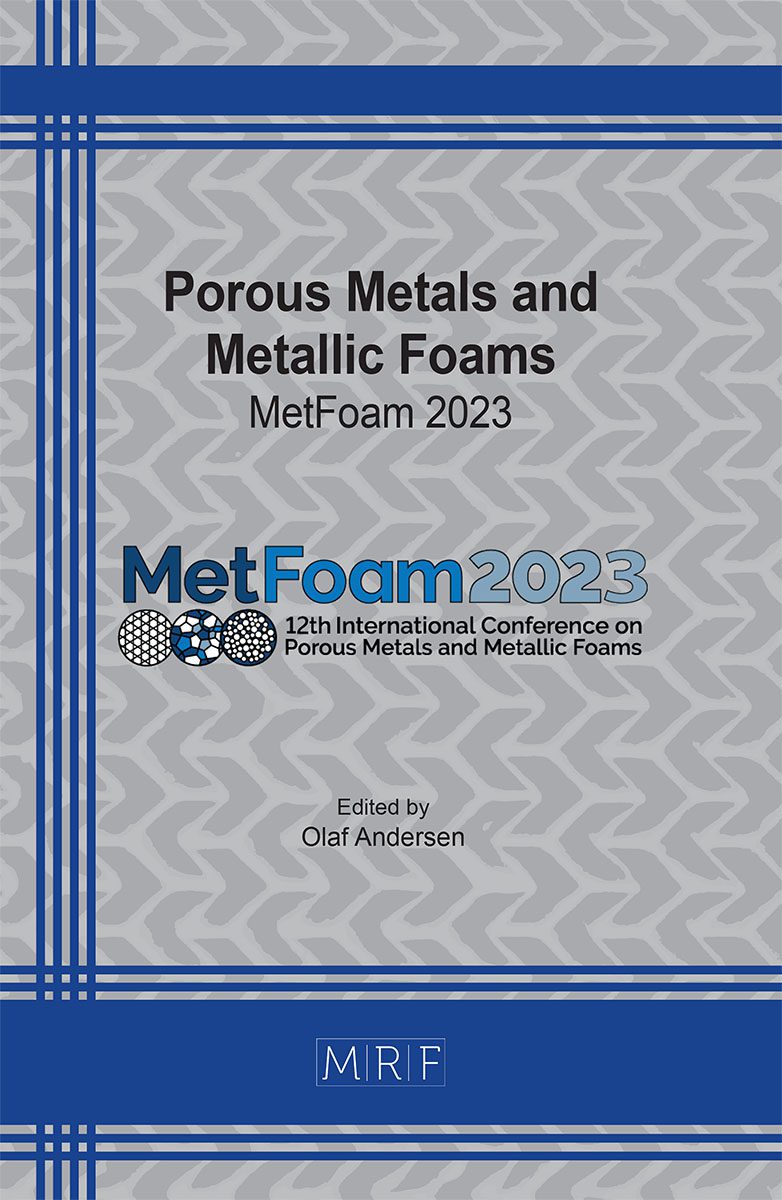Opportunities of Metal Structures in Cooling Systems
Mandy Uhlig, Julius Eik Grimmenstein, Pauline Langbehn, Ralf Döring
download PDFAbstract. The growing market of power electronics in the mobility sector leads to an increasing demand for cooling systems. In the project this need to improve performance is to be met by adapting the cooling structure. Depending on the intended application of cooling systems – automotive, railway and aerospace – different requirements are defined for the cooling process resulting in varying conditions for the design. So metallic foam structures are under investigation because of their high inner surface. Two different process lines are most suitable for the aimed application. The production and optimization of galvanized foams seems to be the most lucrative for a low-cost product, while 3D printing is currently only worthwhile for special applications such as aerospace. As a potentially more cost-effective process, which is already being used for small series, investment casting structures are being investigated as an alternative. Depending on the production process chosen, corresponding requirements for structure creation suitable for production apply. Corresponding process adaptations are also taken into consideration. The first optimization step is an analysis of the conventional open cellular metal foam structures using CT. The results of the CT evaluation, together with the empirical data for fluid mechanical and thermal characteristics, are the basis for a later replacement model of the CFD simulation. Besides the Kelvin cell, which is a good geometrical substitute for the conventional structures that copy the Polyurethan master pattern, other cell types are also considered. Alternatively, structures based on mathematical cells e.g. Schwarz P/D, offer the possibility of separating two media to create cross-flow or counter-flow heat exchangers. Regardless of the chosen system, the main task of the investigation is to find an optimum of the relation between pressure drop and heat transfer performance for the corresponding system and to design the cell arrangement in a way that is suitable for manufacturing. This justifies, among other things, the investigation of a minimal surface structure, which at first seems contradictory. Considering the manufacturing process to be defined beforehand, requirements such as self-supporting design (additive process) and free accessibility (electroplating) also play an important role in the structure development. Thus, the goal is still to optimize the cell and web geometry accordingly.
Keywords
Cellular Metal Structures, Cooling, Power Electronics
Published online 2/25/2024, 8 pages
Copyright © 2024 by the author(s)
Published under license by Materials Research Forum LLC., Millersville PA, USA
Citation: Mandy Uhlig, Julius Eik Grimmenstein, Pauline Langbehn, Ralf Döring, Opportunities of Metal Structures in Cooling Systems, Materials Research Proceedings, Vol. 39, pp 51-58, 2024
DOI: https://doi.org/10.21741/9781644903094-7
The article was published as article 7 of the book Porous Metals and Metallic Foams
![]() Content from this work may be used under the terms of the Creative Commons Attribution 3.0 license. Any further distribution of this work must maintain attribution to the author(s) and the title of the work, journal citation and DOI.
Content from this work may be used under the terms of the Creative Commons Attribution 3.0 license. Any further distribution of this work must maintain attribution to the author(s) and the title of the work, journal citation and DOI.
References
[1] C.Y. Zhao,Review on thermal transport in high porosity cellular metal foams with open cells, International Journal of Heat and Mass Transfer,Volume 55, Issues 13–14,2012, https://doi.org/10.1016/j.ijheatmasstransfer.2012.03.017
[2] Sir Thomson, W. On the division of space with minimum partitional area. Acta Math. 11, 121–134 (1887). https://doi.org/10.1007/BF02612322
[3] Principles of Environmental Protection Standards Committee (2021): DIN EN ISO 14040 – Environmental management – Life cycle assessment – Principles and framework. DIN German Institute for Standardization
[4] Principles of Environmental Protection Standards Committee (2021): DIN EN ISO 14044 – Environmental management – Life cycle assessment – Requirements and guidelines. DIN German Institute for Standardization
[5] H. Lewis, et al., Design + Environment :A Global Guide to Designing Greener Goods, Greenleaf Publishing, Sheffield UK, 2001
[6] S. Beemsterboer, H. Baumann & H. Wallbaum, Ways to get work done: a review and systematisation of simplification practices in the LCA literature. Int J Life Cycle Assess 25, 2154–2168 (2020). https://doi.org/10.1007/s11367-020-01821-w












